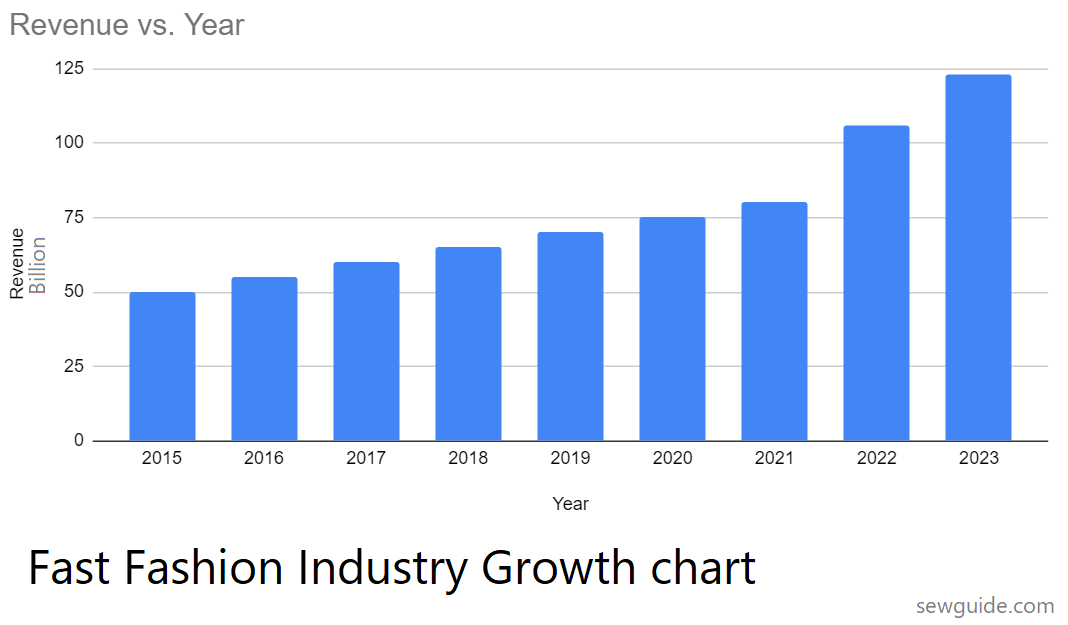In this fast-paced life, when you haven’t smelled a flower in a garden or read a whole book for a long, long time, can you expect fashion to slow down? Absolutely not. Today, clothes are almost disposable for a lot of people, and the fashion industry catering to such people has aptly been named “fast fashion”. But when it goes so fast that it surpasses all rules and regulations to keep the earth intact, it becomes a problem.
When you go ga-ga over the beautiful in-trend clothes available in fast fashion favourite brands like Zara and H&M, are you also aware of the true cost of fast fashion?
The facts and statistics about fast fashion is not encouraging enough for a person with some consciousness and concern about the earth’s environment. Let us explore this with real-world data.

What is fast fashion?
The term “fast fashion” refers to a production and distribution system in the fashion industry that responds fastly to the latest fashion trends and delivers affordable clothing to consumers in a very short period. The important characteristics of fast fashion are high-volume production, instant response to fashion trends, and low-cost garments.
Why is fashion industry fascinated by fast fashion?
There is no one as fickle as a fashion-conscious consumer. And in a very consumer oriented fashion industry, if the players (companies) have to survive, they have to keep up with the ever-changing fashion sensibilities of this fickle consumer.
And today’s consumer is spoilt for choices, and every day they are demanding more and more. As consumers have access to a wide variety of products and brands, they indulge in excessive consumption, succumbing to the need to keep up with others and fashion trends.
And fashion industry, as with any industry, is driven by profits. And profits have a direct correlation to rapid turnover, fast production, low production cost, and availability of employees at low wages -the fashion industry also relies on these factors.
But these come at a cost. A high cost to our survival in this planet – maybe not immediately, but sometime in the future.
I believe that fast fashion and consumers are in a chicken and egg situation – no one can say whether demand drives fast fashion or fast fashion dictates the demand. They go round and round, destroying the last remnants of unpolluted resources of the world – with no one taking the responsibility.
General clothing trends that led to explosion of fast fashion
The survival of the fast fashion industry depends on its customers buying and disposing of clothes season after season. Towards this end, they make use of different marketing techniques that foster over-consumerism. They use FOMO-inducing advertisements, beautiful displays, flash discounts, celebrity endorsements, in-your face social-media campaigns etc., to make their customers buy more and more than they ever need.
Clothing production doubled from 2000 to 2014, and the number of garments purchased per capita between 2000 and 2014 increased by about 60 percent. (Mckinsey.com)
Fast fashion market value is growing at a rate of 16.5 % every year (data from statista.com) and if it goes at this rate, by 2027 the industry will have doubled its value to 190 billion from the year 2021.

Water problems & fast fashion

The fashion industry is the second-largest consumer of water globally. In 2015 alone, the sector used 79 billion cubic metres of water.(Source : forbes.com). Water-intensive processes, such as dyeing and finishing, strain water resources, particularly in regions already facing water scarcity.
It takes about 2,700 liters of water to produce a single cotton shirt (Source: World Wildlife Fund and National Geographic’s Video “Make Each Choice Count”). The excessive water consumption in cotton production contributes to water scarcity and depletes vital water sources.
20% of all global wastewater is produced by fast fashion factories. Around 20% of industrial water pollution is attributed to the fashion industry (Source: euronews.com). The Hazardous chemicals released from textile production and finishing processes like dyeing processes contaminate rivers, lakes, and groundwater, impacting ecosystems and human health.
Textiles produce 35% of the microplastic pollution in the world’s oceans (Source: iucn.org)
The fast fashion industry is responsible for dumping half a million tons of microfibers into the ocean each year (Source: The Guardian).
These tiny plastic fibers, shed during washing, harm marine life and can eventually make their way into our food, posing health risks.
Laundry alone causes around half a million tonnes of plastic microfibres to be released into the ocean every year—the equivalent of almost three billion polyester shirts. (Says UN Environmental Program website)
Polluting effect of fashion on soil

Cotton production accounts for 24% of insecticides and 11% of pesticides used globally, posing significant risks to human health and the environment (Source: theworldcounts.com).
Up to 8,000 different chemicals are used in textile production, including many hazardous substances that can harm human health. These are directly absorbed by soil (Source: greenamerica.org).
92 million tons of global fashion waste was produced in 2015 (Source : mdpi.com). This accounts for 4% of global waste each year.
In the United States, textile waste has increased by 811% from 1960 to 2015 (Source: Study by United states Environmental Protection Agency). Only a fraction of the clothes that are made are recycled or reused (Source: Ellen MacArthur Foundation).
The disposal of unsold inventory is a problem with fast fashion. As 85% of clothes that are made, end up in landfills or are incinerated, leading to more pollution.
Polyester, a commonly used fabric in fast fashion, is made from fossil fuels and takes up to 200 years to decompose (Source: Greenpeace.org.uk). This synthetic material adds to the mounting plastic pollution crisis, with microplastics ending up in our oceans and food chain.
Read more: Is polyester safe? ; How is polyester made.
Pollution of air
The fast fashion industry emits 1.2 billion tons of greenhouse gases each year (Source: nature.com; United Nations Economic Commission for Europe).
The fashion industry is responsible for consuming more energy than the aviation and shipping industries combined (Source: United Nations climate change website unfccc.int). The energy-intensive production processes of fast fashion contribute to high carbon emissions and exacerbate climate change. Fast fashion’s carbon footprint will cause global warming and climate change.
Fast fashion and human abuse
Approximately 93% of fast fashion brands do not pay garment workers a living wage (Source: Fashion checker). Many companies in the developed countries use workers in developing countries like India, Pakistan and Bangladesh to make their clothes at scale and at cheap rates.
The average garment worker in Bangladesh earns $96 a month (Source: wri.com). In India this may be around 135 dollars. In comparison in a developed country like USA, the salary of an average garment worker can be around $2500.
Exploitative labor practices are still in action in many fast fashion supply chains (in developing and under-developed countries). The workers endure abysmal wages as well as unsafe working conditions. In their pursuit of profit, fast fashion brands often overlook safety regulations and working conditions of its laborers. This has resulted in many factory accidents and tragedies, such as the Rana Plaza collapse in 2013, which claimed over 1,100 lives (Source: wikipedia).
This widespread violation of workers’ rights keeps them trapped in a cycle of poverty, struggling to meet their basic needs.
The fast fashion industry has been linked to a high prevalence of gender-based violence and harassment in garment factories (Source: theguardian.com).
There are constant violations of human rights of children in the garment and footwear industries in many poor countries. The fast fashion industry contributes to the exploitation of child labor, with an estimated 170 million children engaged in garment production worldwide (Source: humanium.org).
Children are subjected to hazardous working conditions and denied their right to education.
Conclusion
If reports are categorically saying that fashion industry is the second most polluting industry in the world (after oil industry), there is something there, surely. (Source: United nations website)
The business success of the fashion industry depends on “outdated clothes”. If clothes last longer and across seasons, there is no survival for the industry. That is understandable. But not planning long term, not using a chance for recycling to avoid waste and not exploring sustainable practices – these are not understandable and very much unpardonable. Governmental apathy in not enforcing compliance measures to fast fashion companies is equally bad.
As the world moves away from polluting oil and petroleum fuels, are the fashion industry stalwarts doing enough?. Or are the sustainable ideas disposed off, just like the out-of-season clothes?
Related post: Slow fashion; Sustainable fashion; Projects to Recycle old jeans; Using organic cotton; Fashion styles.

YES!
Thank You
Great fast fashion report!
Thanks for the reminder for all of us. I plan to share this post.
Wow. Many things I learned with this article. Thanks for posting it!